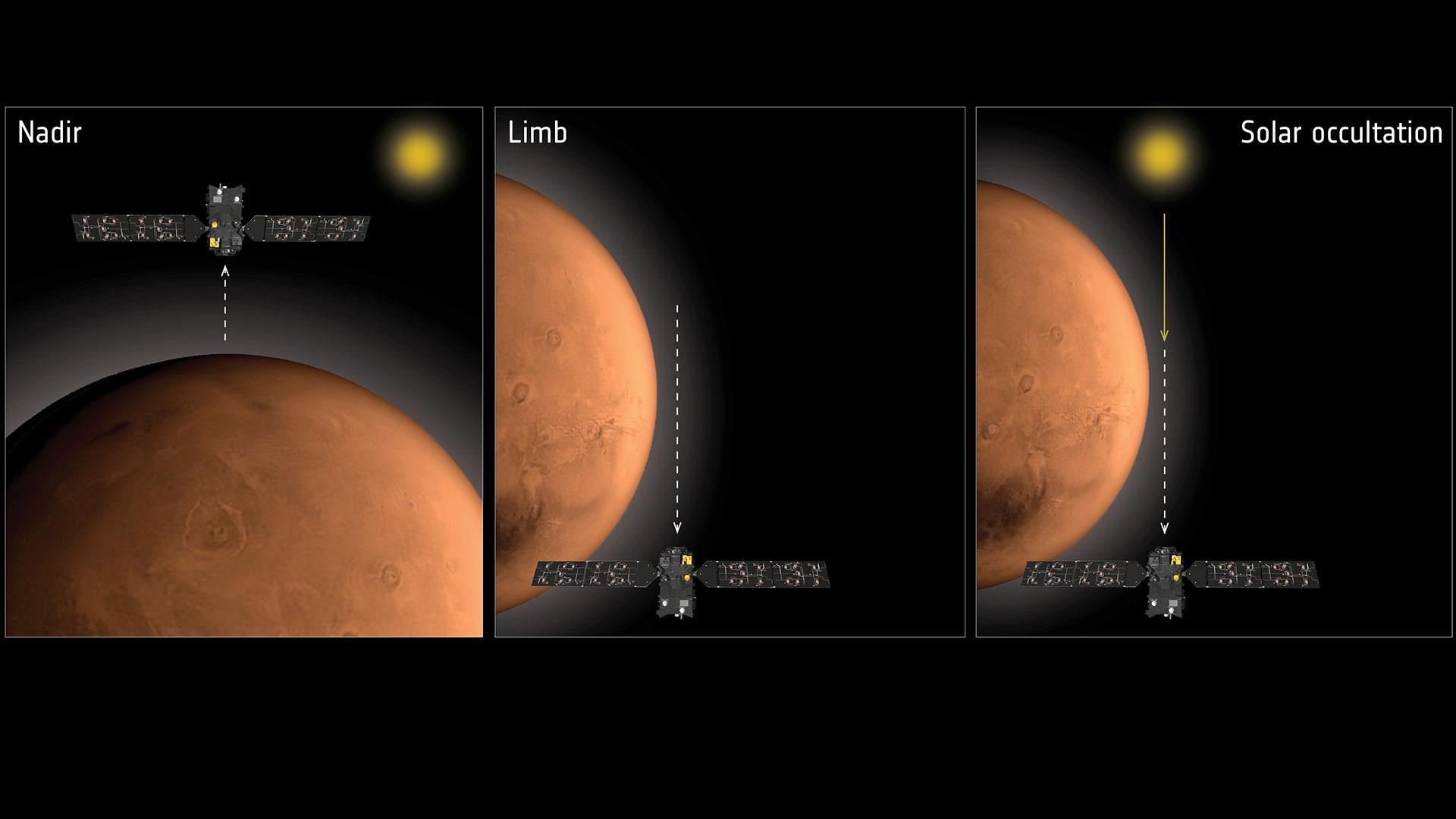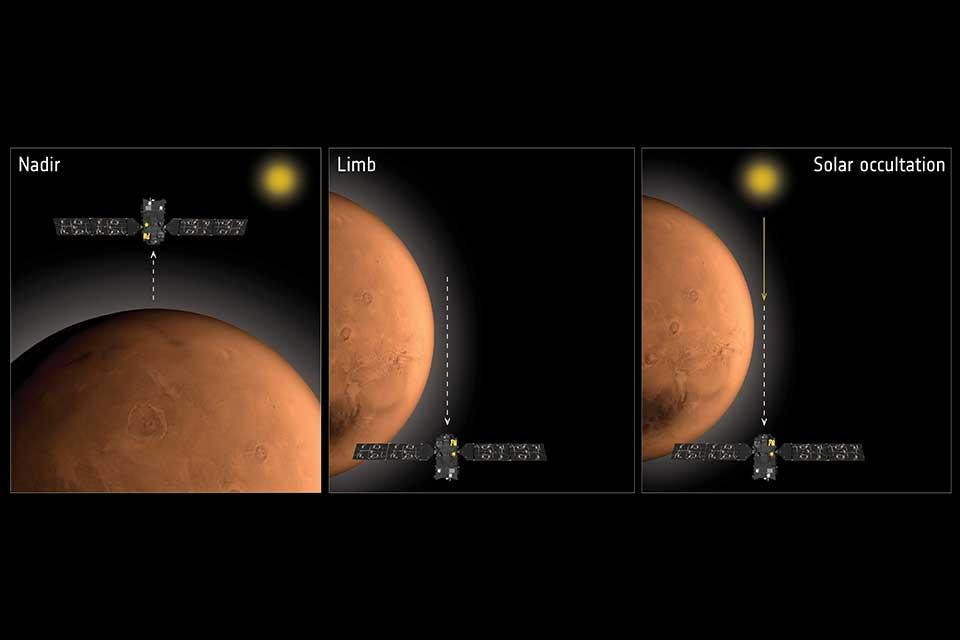Sea salt embedded in the dusty surface of Mars and lofted into the planet’s atmosphere has led to the discovery of hydrogen chloride – the first time the ESA-Roscosmos ExoMars Trace Gas Orbiter has detected a new gas.
A major quest in Mars exploration is hunting for atmospheric gases linked to biological or geological activity, as well as understanding the past and present water inventory of the planet; this could determine if Mars could ever have been habitable and if any water reservoirs could be accessible for future human exploration. This new result from the ExoMars team published today in Science Advances unveils an entirely new class of chemistry and provide further insights into seasonal changes and surface-atmosphere interactions as driving forces behind the new observation.
A new chemistry
‘We have discovered hydrogen chloride for the first time on Mars,’ explains Dr Kevin Olsen from the Department of Physics at the University of Oxford and one of the lead scientists of the discovery. ‘This is the first detection of a halogen gas in the atmosphere of Mars, and represents a new chemical cycle to understand; it is also the first such discovery since the announcement of methane in 2004 that was one of the motivations for the ExoMars mission.’

Hydrogen chloride gas, or HCl, comprises a hydrogen and chlorine atom. Mars scientists were always on the look-out for chlorine- or sulphur-based gases because they are possible indicators of volcanic activity. But the nature of the hydrogen chloride observations – the fact that it was detected in very distant locations at the same time, and the lack of other gases that would be expected from volcanic activity – points to a different source. That is, the discovery suggests an entirely new surface-atmosphere interaction driven by the dust seasons on Mars that had not previously been explored.
In a process very similar to that seen on Earth, salts in the form of sodium chloride – remnants of evaporated oceans and embedded in the dusty surface of Mars – are lifted into the atmosphere by winds. Sunlight warms the atmosphere causing dust, together with water vapour released from ice caps, to rise. The salty dust reacts with atmospheric water to release chlorine, which itself then reacts with molecules containing hydrogen to create hydrogen chloride. Further reactions could see the chlorine or hydrochloric acid-rich dust return to the surface, perhaps as perchlorates, a class of salt made of oxygen and chlorine.
Water critical in this chemistry
‘You need water vapour to free chlorine and you need the by-products of water – hydrogen ¬– to form hydrogen chloride,’ continues Dr Olsen. ‘Water is critical in this chemistry. We also observe a correlation to dust: we see more hydrogen chloride when dust activity ramps up, a process linked to the seasonal heating of the southern hemisphere.’
The team first spotted the gas during the global dust storm in 2018, observing it appear simultaneously in both northern and southern hemispheres, and witnessed its surprisingly quick disappearance again at the end of the seasonal dusty period. They are already looking into the data collected during the following dust season and see the HCl rising again.
Extensive laboratory testing and new global atmospheric simulations will be needed to better understand the chlorine-based surface-atmosphere interaction, together with continued observations at Mars to confirm that the rise and fall of HCl is driven by the southern hemisphere summer.
Follow-up findings
The discovery was based on data collected from the mission start-up in April 2018 to April 2020 and covers one full Mars year (two Earth years) – and it also includes one perihelion period where Mars is closest to the sun and it is summer in the southern hemisphere. Dr Olsen concludes: ‘We have also been studying a second dusty season via ExoMars from August 2020 to now and our studies confirm that when the dust lifted again, HCl started showing up again. We have also been able to show a fairly good correlation between HCl and water vapour, which is needed for the proposed photochemistry to take place. We used a novel analysis technique that allows us to spot HCl in the lowest part atmosphere during the northern summer when the whole atmosphere is colder and thinner and less active. These follow-up findings are published in Astronomy and astrophysics.’
Transient HCl in the atmosphere of Mars, OI Korablev et al, Science advances (2021)
Seasonal reappearance of HCl in the atmosphere of Mars during the Mars year 35 dusty season, KS Olsen et al, Astronomy and astrophysics (2021) DOI:10.1051/0004-6361/202140329

